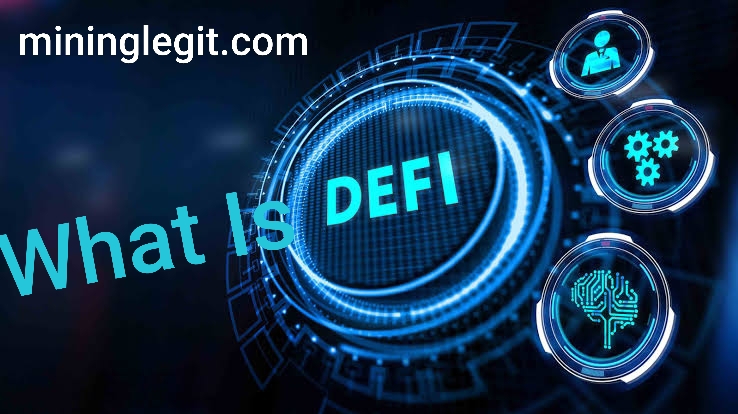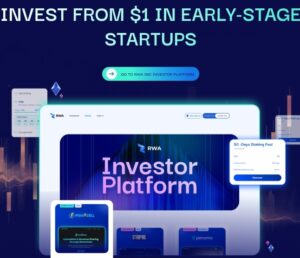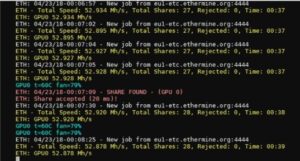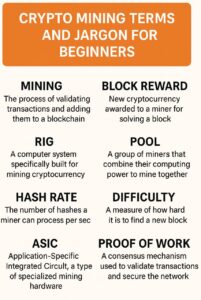What is DeFi?

Decentralized Finance, or DeFi for short, is an emerging trend in the world of finance that leverages blockchain technology to eliminate intermediaries and provide open, permissionless financial services. In simple terms, DeFi aims to recreate traditional financial systems in a decentralized manner, where users have full control over their assets and can transact directly with each other, without relying on banks or other financial institutions. Before you see our Conclusion, read the latest information about bitcoin halving.
Evolution and Growth of DeFi
The concept of DeFi started with the introduction of Bitcoin, the world’s first cryptocurrency, in 2009. However, it wasn’t until the launch of Ethereum in 2015 that the foundations for DeFi were laid. Ethereum introduced smart contracts, which are self-executing agreements with the terms of the agreement directly written into lines of code.
This breakthrough allowed for the creation of decentralized applications (DApps) and opened the door to a new era of programmable money and financial services. Since then, the DeFi ecosystem has experienced rapid growth, with an increasing number of projects and applications being built on blockchain platforms.
The total value locked in DeFi protocols has grown exponentially, reaching billions of dollars and attracting the attention of investors, developers, and users worldwide.
Key Components of DeFi Ecosystem
1 Decentralized Exchanges (DEX)
Decentralized exchanges, or DEXs, are one of the foundational pillars of DeFi. Unlike traditional centralized exchanges, DEXs allow users to trade digital assets directly with each other without the need for a middleman.
This reduces the risk of hacks or theft of funds, increases privacy, and enhances the overall security of transactions. DEXs provide users with greater control over their assets and enable anyone to participate in trading, promoting a more inclusive and accessible financial system.
2 Stablecoins and Tokenization
Stablecoins are cryptocurrencies that are designed to maintain a stable value by pegging their price to a real-world asset, such as the US Dollar.
They play a crucial role in DeFi by providing stability and a familiar unit of account within a volatile cryptocurrency market. Additionally, tokenization allows for the representation of real-world assets, such as real estate or artwork, as digital tokens on a blockchain. This enables fractional ownership, liquidity, and easier transferability of traditionally illiquid assets.
3 Lending and Borrowing Platforms
DeFi lending and borrowing platforms allow users to lend their digital assets and earn interest or borrow assets by using their existing holdings as collateral.
These platforms replace traditional banks and credit intermediaries, providing individuals and businesses with more accessible and efficient ways to access capital. The transparency and auditable nature of blockchain technology also facilitate trustless lending and reduce counterparty risks.
4 Decentralized Oracles
Decentralized oracles are services that provide external data to smart contracts. They play a critical role in connecting blockchains with real-world information, such as price feeds or weather data, enabling the execution of complex financial transactions. Oracles ensure that smart contracts have access to accurate and reliable data, while maintaining a decentralized and tamper-resistant infrastructure.
Benefits and Potential of DeFi
1 Financial Inclusion and Accessibility
DeFi aims to democratize finance by providing financial services to anyone with internet access, regardless of their geographical location or social status. It removes the need for intermediaries, such as banks, which can exclude individuals who lack access to traditional banking services. With DeFi, anyone with a smartphone and an internet connection can access a wide range of financial services, including saving, lending, trading, and more. Decentralized finance systems is best to help crypto exchange.
2 Disintermediation and Reduced Costs
By eliminating intermediaries, DeFi reduces the costs associated with traditional financial services. Without the need for banks or other intermediaries, users can transact directly with each other, saving on fees, processing times, and bureaucracy. This opens up new opportunities for cost-effective and efficient financial transactions, particularly for individuals and small businesses that might have been excluded from traditional systems due to high fees or lengthy procedures.
3 Programmability and Automation
Smart contracts in the DeFi ecosystem are programmable agreements that can be automatically executed when certain conditions are met. This programmability allows for the automation of financial transactions, reducing the need for manual processes and enhancing efficiency.
For example, DeFi platforms can automatically distribute interest to lenders or automatically liquidate collateral if borrowers fail to repay their debts. This automation not only saves time, but also reduces the potential for errors and fraud.
Risks and Challenges in DeFi
1 Smart Contract Vulnerabilities
Smart contracts are only as good as the code that powers them, and vulnerabilities or bugs in the code can lead to significant financial losses. While audits and security measures are in place, the decentralized nature of DeFi makes it a prime target for hackers. It’s essential for users to exercise caution, conduct due diligence, and only interact with reputable projects and protocols. Decentralized finance
2 Market Volatility and Collateral Risks
The cryptocurrency market is highly volatile, and DeFi assets are not immune to price fluctuations. This volatility can pose risks for borrowers who use their holdings as collateral, as the value of their collateral can quickly decline, leading to liquidation. Market volatility also affects the stability of stablecoins and can impact the overall performance of the DeFi ecosystem.
3 Regulatory and Compliance Challenges
The decentralized nature of DeFi presents challenges in terms of regulatory compliance and oversight. As governments and regulatory bodies catch up with the rapid growth of DeFi, there is uncertainty surrounding how existing financial regulations will be applied to decentralized systems.
This lack of regulatory clarity can introduce legal risks and potential obstacles to the widespread adoption of DeFi.Remember, while DeFi offers exciting opportunities, it’s important to navigate the space with caution and stay informed about the inherent risks involved.
Popular DeFi Protocols and Platforms
1 Uniswap: A Decentralized Exchange Protocol
Uniswap is the cool kid on the block when it comes to decentralized exchanges. Unlike traditional exchanges that rely on order books, Uniswap uses a unique automated market maker (AMM) system.
This allows users to easily swap various ERC-20 tokens directly from their wallets without the need for intermediaries. Plus, anyone can provide liquidity to Uniswap and earn trading fees. It’s like being your own stockbroker, but way more exciting.
2 Compound: A Leading Lending and Borrowing Platform
Compound is where the finance geeks hang out. It’s a lending and borrowing platform that operates entirely on the blockchain. You can borrow any supported token by supplying collateral, and earn interest by lending out your tokens to other users.
It’s like a decentralized banking system, without the pesky bureaucracy. Just be careful not to get too caught up in the excitement and borrow more than you can chew. We don’t want any DeFi-induced financial mishaps!
3 MakerDAO: Creating Stability with the Dai Stablecoin
MakerDAO is the superhero that fights volatility in the crypto world. It’s responsible for creating the Dai stablecoin, which is pegged to the value of the US dollar.
Users can lock up their crypto assets as collateral and generate Dai tokens, providing stability in an otherwise unpredictable market. It’s like having a reliable sidekick that keeps your funds safe while you navigate the ups and downs of the crypto rollercoaster.
Regulation and Legal Considerations in DeFi
When it comes to regulation, DeFi is still navigating uncharted territory. The ever-evolving landscape of cryptocurrencies and decentralized finance poses unique challenges for regulators.
Some countries have been proactive in establishing frameworks, while others are cautiously observing from the sidelines. It’s like a wild west showdown, but instead of cowboys and outlaws, we have lawyers and policymakers.
Compliance Challenges for DeFi Projects
Compliance is not the most glamorous word in the DeFi vocabulary, but it’s necessary to keep the ecosystem running smoothly. DeFi projects face challenges in terms of identity verification, anti-money laundering measures, and other compliance requirements.
Balancing the principles of decentralization with regulatory expectations is a delicate dance, much like trying to juggle bowling pins while riding a unicycle. It takes skill and finesse.
Importance of Self-Regulation and Best Practices
While regulatory frameworks catch up, self-regulation and best practices play a crucial role in maintaining trust and integrity within the DeFi community.
Projects that prioritize security, transparency, and responsible practices have a better chance of standing the test of time. It’s like being the responsible friend who reminds everyone to wear a helmet and eat their vegetables. Safety first, kids!
Future Trends and Outlook for DeFi
Interoperability and Cross-Chain DeFi
In the world of DeFi, cross-chain compatibility is the holy grail. Imagine being able to seamlessly move your assets between different blockchains as if they were all part of the same happy family.
Interoperability opens up a world of possibilities and brings us one step closer to a truly decentralized financial ecosystem. It’s like having a universal remote control that works with any TV, but with more decentralized finance and fewer Netflix.
Integration with Traditional Financial Systems
DeFi may be the rebellious teenager of the financial world, but it’s slowly gaining recognition from traditional finance institutions. As the industry matures and proves its worth, we can expect to see more integration between DeFi and traditional financial systems.
This bridge between the old and the new will likely bring about exciting opportunities and shape the future of finance. It’s like convincing your grandparents to embrace social media – a little challenging, but worth the effort.
Scalability Solutions for DeFi Platforms
As more users flock to it’s platforms, the need for scalability becomes increasingly important. High gas fees and network congestion can ruin the party faster than a spilled drink. Thankfully, developers are working on solutions like layer 2 protocols and sharding to alleviate these scalability issues. It’s like expanding the dance floor to accommodate more enthusiastic dancers.
The more, the merrier!In conclusion, DeFi represents a groundbreaking paradigm shift in the world of finance. By leveraging the power of blockchain technology and decentralization, it offers a range of transformative benefits, from increased financial inclusion and accessibility to reduced costs and enhanced programmability.
However, it is not without its challenges, including smart contract vulnerabilities and regulatory complexities. As the DeFi ecosystem continues to evolve and mature, it holds the potential to reshape the financial landscape and empower individuals across the globe. With ongoing innovation and collaboration, DeFi is poised to play a significant role in the future of finance.
FAQ
1. What is the main difference between traditional finance and DeFi?
Traditional finance relies on centralized intermediaries such as banks and financial institutions to facilitate transactions and provide financial services.
DeFi, on the other hand, operates on decentralized networks, leveraging smart contracts and blockchain technology to eliminate intermediaries and enable direct peer-to-peer transactions. This decentralized nature of DeFi offers greater transparency, accessibility, and control over financial activities.
2. Are there any risks involved in participating in DeFi?
Yes, there are inherent risks associated with DeFi. Smart contract vulnerabilities, market volatility, and regulatory uncertainties are some of the key risks to consider. Smart contracts, while efficient, can be susceptible to bugs or hacks, which may lead to financial losses. The value of assets within the DeFi ecosystem can also experience significant fluctuations, potentially impacting investments. Furthermore, as DeFi operates in a relatively nascent regulatory landscape, compliance challenges and potential legal implications may arise.
3. Can anyone participate in DeFi?
One of the key advantages of DeFi is its inclusive nature. Anyone with an internet connection can participate in DeFi protocols and platforms, regardless of their location or background.
It aims to provide financial services to the unbanked and underbanked populations, enabling greater financial inclusion. However, it is important to note that some DeFi platforms may have restrictions or require users to fulfill certain criteria, such as owning specific cryptocurrencies or meeting Know Your Customer (KYC) requirements. This is a decentralized finance nature.
4. How can regulation impact the growth of DeFi?
Regulatory frameworks and policies play a crucial role in shaping the trajectory of DeFi. While regulation can provide legitimacy and protection for participants, it can also introduce compliance burdens and limit innovation. Striking the right balance between fostering innovation and safeguarding user interests is a challenge for regulators around the world.
As the space continues to evolve, it is expected that regulatory frameworks will adapt to address the unique characteristics and risks associated with decentralized finance. Start with best defi practices.





